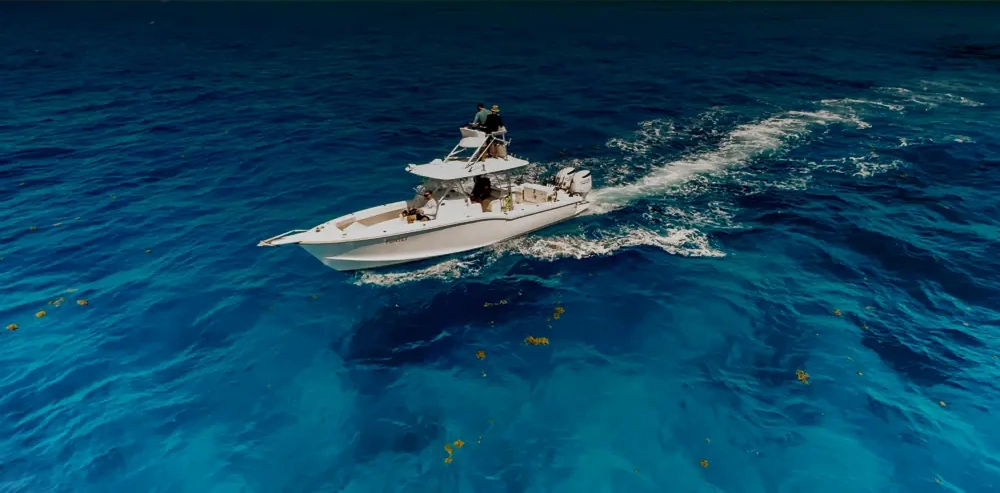Get the Jump on Early Dolphin
By Captain John Sahagian
Winter doesn’t mean the summer guys are gone
It’s easy to think of dolphin when 30-pound fish are hitting the dock in April and May or when the bite is just outside the reef in July and August. The winter dolphin are more moderate in size and number. It’s during winter, when the cold fronts shake things up, that the reminder is helpful.
The majority of winter dolphin are caught near the reef’s edge. When predators like bottom fish, sails and tuna just cruise side the run, it’s easy to forget that winter dolphin are still here in moderate numbers.
Fish in the 5 to 15-pound range are common — schoolies in any amazing green-blue-yellow flash of color will haul a dozen. And just to let you know that we’re not kidding — winter dolphin are less likely to be found lazing around flotsam as is common with summer dolphin.
“Murphy’s Law is still looking out for you. Winter dolphin bite best when the wind is up and the seas are up. You often know you are in dolphin territory because their current in which they like to travel is usually running well to east against the wind. The seas stack up along that edge very quickly.”
When the cold fronts mix things up, it pushes good quantities of blue water over the reef with dirty shallower water. When this dirty water meets the clear offshore water, it creates a great color change. The dolphin are usually found on the surface, clear-water side of the color change.
I say “usually” because they are often riding on the dirty side, with great regularity. These are usually smaller than your average spring fish, and you should select your offerings accordingly.
Small to medium-size ballyhoo are about right. If you are live baiting with pilchards, the plume you bring out for sails might dissuade some of the smaller takers. Other live baits like pinfish and, of course, ballyhoo work wonders as well.
Rig your ballyhoo like you would in the summer. Single-strand necktie leaders work well and allow you a shot at speedy visitors like king mackerel and wahoo. With the winter current, you should see no more than a few vessels of weed in front of your boat.
For some reason, fresh coastals that run on this slower line tend to look them over better than a fish coasting in on a faster trolled bait. Color changes in 180 to 240 feet are ideal for winter dolphin. If you don’t find them there, keep working out into deeper water.
Winter dolphin are less likely to be found milling around flotsam as is common with summer dolphin. Winter fish tend to move quickly along the color changes, so watch for slicks in the water or birds circling and dipping over the fish. Once you’ve found the fish, it’s just a matter of getting them to bite.
The less visible the leader, the better chance you have of getting the strike. For light-tackle dolphin fishing, fluorocarbon leader is worth the added expense in this situation.
With schools of dolphin and scattered terns in sight, winter trolling is fun. It doesn’t seem to matter if you prefer trolling or live baiting — winter fish are usually perfectly willing to accept most offerings. But remember, these fish are generally smaller. The first thing you know, you’re craving a little fresh dolphin or some fillets for the fryer. Just put the crowds along the reef behind you — there are still fish just dying to jump the line.


